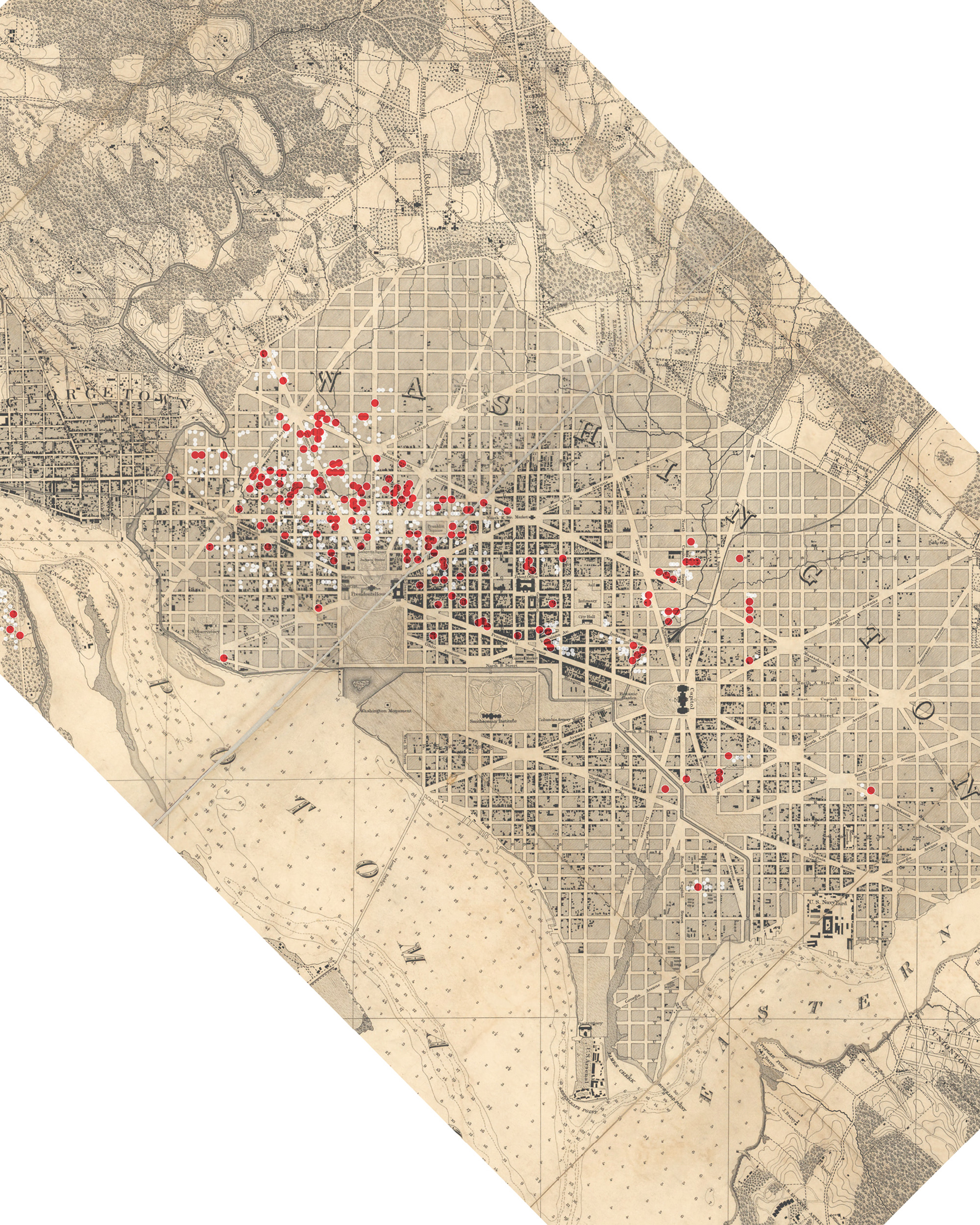Artist Project / Parallelograms
DC’s PACs
Steve Rowell
Political Action Committees (PACs), think tanks, trade associations, lobbying agencies, and advocacy groups are everywhere in Washington, DC, a confounding and frustrating (non)place that is home to the United States’ culture of political gridlock. Ideologically, these institutions run the gamut, and often pretend to be something they are not. Some are clearly aligned with bipartisan efforts toward regulation and the public good, while others transparently represent business interests; still others have mastered the dark arts of public relations camouflage and of covert campaign financing. Classifying all of these disparate institutions, especially the lobbying agencies and PACs with their shifting agendas, is next to impossible. Despite this elusiveness, all are finally situated at real places with actual street addresses and suite numbers. Behind mirrored facades, between neoclassical columns, and nestled in landscaped office parks in the suburbs surrounding the nation’s capital, appointed experts and their wealthy funders gather to discuss and strategize how to create political and economic environments that help secure their visions of the future.

Parallelograms is concerned with these near futures—some more probable than others—and, more importantly, with a world parallel to our own. The project operates at the intersection of the vectors of geography, landscape, politics, economy, and temporality and their architectural and spatial manifestations. Typological representations of architecture, the photographs on the following pages also offer a glimpse into this complex political terrain and its flourishing shadow economy, a clandestine world of power and money. In this sense, the ways in which material elements of architecture frame but also distort reality become increasingly evident as we become aware of what the institutions inside stand for. The names of these institutions are also often implicated in these machinations. While the activities of the Corn Refiners Association and the National Rifle Association are self-evident, those of Citizens United or the Hudson Institute, for example, are not.
Applying Timothy Morton’s term, this campaign-industrial complex has become a hyperobject. Its massive scale and scope defy perception. Like radioactive waste, climate change, or plastic, we struggle to understand just how much influence it has on our everyday lives.[1]Parallelograms aims to give form to these amorphous entities and to illuminate the opaque discourses that obscure them.